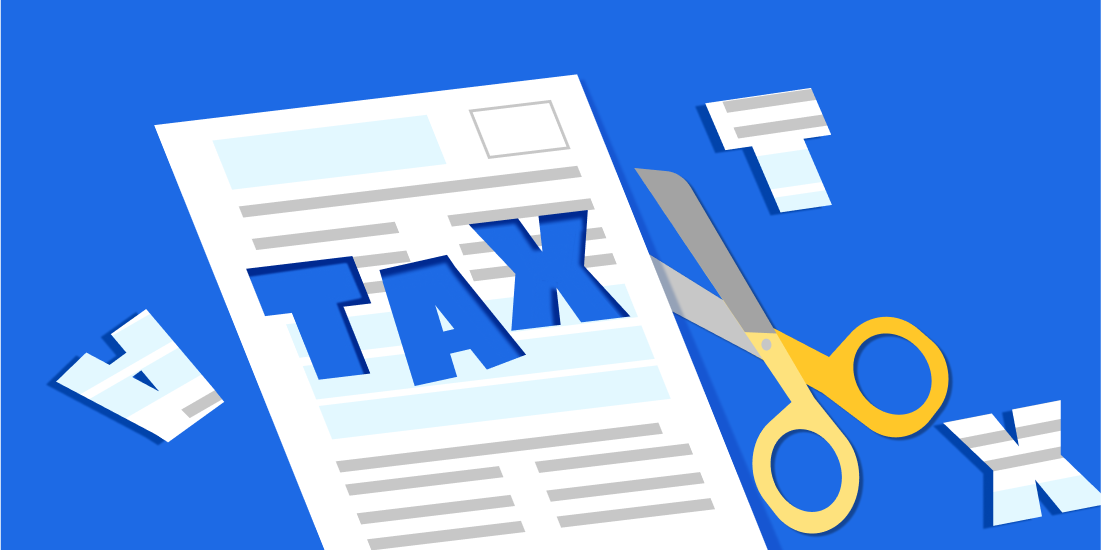Josh Shrair
Meet our writer
Josh Shrair
Investment Strategist, Betterment
Josh specializes in asset allocation, portfolio construction, and investment selection for Betterment’s model portfolios. Previously, he was on the Investment team at Antheia Partners, a growth equity private market firm focused on climate technology investments. His experience also includes managing institutional multi-asset client portfolios as part of the Outsourced Chief Investment Officer team at Goldman Sachs Asset Management. Josh studied finance at Syracuse University, earning a bachelor’s degree from the Whitman School of Management.
Articles by Josh Shrair
-
![]()
The proactive strategy behind passive investing
The proactive strategy behind passive investing Oct 13, 2025 11:35:02 AM And when actively-managed funds may give your portfolio an edge. Key takeaways Passive and active investing strategies both require proactive planning while differing in their end goals. Passive investing seeks to match market returns, typically by way of index or exchange traded funds that closely mirror a market. Passive funds cost significantly less on average and often perform better in more efficient asset classes like U.S. Large Cap stocks. Active investing aims to beat the market by selecting the specific securities you or a manager believe will outperform relative to their peers. Active funds cost 10x more on average, but tend to perform better in less efficient classes such as U.S. core bonds. Many institutional investors—Betterment included—employ a mix of both strategies. Of all the confusing ‘this or that’s’ of investing, few are more misleading than the choice between ‘active’ and ‘passive’ strategies. Passive sounds hands-off—but in practice, it’s anything but. Take our automated investing offering. While it uses a blend of both strategies, it falls more on the passive end of the spectrum. Yet on any given trading day, we’re … Scanning for tax loss harvesting opportunities by the minute Executing thousands of trades to keep customers’ portfolios humming Researching dozens of new funds, slotting in new options quarterly to improve our portfolios’ desired exposures at lower cost And every year, we refresh the asset weights of all our portfolios, making sure they align with the latest global market environment and long-term projections. Pretty lively for a passive strategy, no? So if passive investing is a bit of a misnomer, what exactly sets it apart from more "active" approaches? And which situations are each best suited for? For those helpful distinctions, let’s start with their respective mission statements. Two missions, two mindsets Both passive and active investing involve someone, sometimes a “retail” investor such as yourself, sometimes a single professional or an entire firm, making decisions on what to invest in. The key difference boils down to their objectives and related costs: With active investing, you're aiming to beat the market by selecting the specific securities you believe will outperform their peers. While the costs of actively-managed funds are trending downward, they’re still 10x more expensive on average than that of their passively-indexed peers. With passive investing, you're seeking to simply match a market’s returns. A lower bar, for sure, but also at a lower cost. The fees or “expense ratios” charged by passive funds often fall below 0.10%. Which is better? Well, beating the market is easier said than done, especially in the long run. Consider the S&P 500, for example, the most popular pick in the market for U.S. Large Cap stocks. Fewer than 15% of similar actively-managed funds have outperformed it for stretches of five years or longer. But that doesn't mean there’s no role to play for active investing, even for the long-term, risk-averse investor. Some markets aren't as accurately priced or “efficient” as the S&P. With the right expertise and right access to information, there’s relatively more value to be had in smaller markets like those in developing countries, and even more so in bond markets. The question then becomes, who’s the best at sniffing out those deals? When investing in an actively-managed fund, you’re investing in the team behind it as much as the securities themselves. Conducting due diligence on the team and their track record is critical. That’s why when using these types of ETFs in our portfolios, we use a robust quantitative and qualitative research approach to size up the teams behind them. There’s also the matter of niche markets, and whether a passive index fund is even available. One such example is the Academy Veteran Bond ETF (VETZ), one of the newest actively-managed funds we’ve brought on board. VETZ mainly invests in loans to active and retired U.S. service members and the survivors of fallen veterans, making it ideal for both active management and our Socially Responsible Investing’s Social Impact portfolio. Lastly, a lot of everyday investors simply enjoy directing some portion of their investing themselves. When we surveyed Betterment customers about their overall investing habits, ¾ of them said they mix in some self-directed investing alongside their managed portfolios. There’s nothing wrong with a little responsible fun like this. Picking your own securities—even alongside a managed portfolio—can be exciting and educational. And all that choice naturally leads to the next big difference between active and passive investing. The building blocks of a portfolio Some of the active/passive split can be seen in a given portfolio’s pieces, and how granular the investor gets. Do you want to start at the individual security level, picking single stocks and bonds yourself, or paying someone to do that for you? Or would you rather zoom out and start with funds that track a predetermined list or “index” of said securities? These can cover entire asset classes, like treasury bonds, or represent a “sub-asset” slice of a market, like short-term treasury bonds. Stock indexes are weighted by the current value of the companies within them. These market "capitalizations" ebb and flow, of course, so the makeup of indexes and the funds that track them naturally evolve over time. They're "self-cleansing" in that sense. Lower performers make up less and less of the index over time, just as higher performers become bigger slices. It's why the bulk of the S&P 500 today looks very different than it did 20 years ago. The shape-shifting S&P (top companies by market valuation) 2025 2005 1. Nvidia Corp (NVDA) 1. GE Aerospace (GE) 2. Microsoft Corp (MSFT) 2. Exxon Mobil Corp (XOM) 3. Apple Inc (AAPL) 3. Microsoft Corp (MSFT) 4. Alphabet Inc (GOOG) 4. Citigroup Inc (C) 5. Amazon.com Inc (AMZN) 5. Walmart Inc (WMT) Source: FactSet There's also the hybrid “smart beta” approach to index fund investing. Here, a fund manager starts with a preset index before actively tailoring it based on a set of quantitative investment factors. We offer one such option in the form of the Goldman Sachs Smart Beta portfolio, which invests more heavily in companies with at least one of the following factors: They’re cheap relative to their accounting value. They tend to be sustainably profitable over time. Their returns are relatively low in volatility. They’ve been trending strongly upward in price. Use the right tool for the job All of this may be a lot to take in. But we can simplify things by bringing it all back to the big picture. Active investing seeks to beat the market. It’s typically higher-cost, and comes with relatively higher risk. In specific use cases, however, an experienced team can outperform related indexes. Passive investing aims to replicate market returns at a lower cost, often over the long-term. It starts with the building block of funds instead of individual securities. As is so often the case with investing, this isn’t an either/or proposition. We use both strategies—and sometimes a blend—at Betterment, because each has a role to play in building wealth. Regardless of whose hands are guiding your investing, we give you the tools to grow your money with confidence. -
![]()
Four ways we help trim your tax bill
Four ways we help trim your tax bill Aug 15, 2025 9:00:00 AM And why these "invisible" wins matter more than you may think. As investors, we tend to focus most on what we can see. Things like portfolio makeup, and the returns generated by those investments. No less important, however, are the less obvious things, like the taxes you never paid in the first place because of technology that quietly runs in the background. You may only think about taxes once a year, but here at Betterment, every day is Tax Day. This sort of year-round tax optimization sounds boring, but believe us, it makes a difference. Taxes can steadily eat away at your returns over the years. So any advisor worth their salt should take taxes seriously and minimize them as much as possible. These “invisible” wins are hard to spot in the moment, so let’s shine a light on them now. Here are four sophisticated ways we buy, sell, and hold your shares, all in the name of trimming your tax bill. Choosing which assets go where – Our Tax Coordination feature helps shield high-growth assets in the most tax-efficient account types. Rebalancing wisely – We take advantage of any existing cash flows to help minimize capital gains taxes while rebalancing your portfolio. Choosing which taxable shares to sell (or donate) – Our TaxMin technology helps minimize short-term capital gains taxes. Harvesting losses – When your taxable investments dip below their initial purchase price, we jump on the opportunity to “harvest” the theoretical loss and potentially lower your future tax bill. 1. Choosing which assets go where From a tax perspective, you have three main account types at your disposal when saving for retirement: Tax-deferred (traditional IRAs, 401(k)s, etc.), where taxes are paid later. Tax-exempt (Roth IRAs, 401(k)s, etc.), where taxes are paid now. Taxable, where taxes are paid both now and later. Because of their different tax treatments, certain types of investments are a better fit for certain accounts. Interest from bonds, for example, is typically taxed at a higher rate than stocks, so it often makes sense to keep them away from taxable accounts. This sorting of asset types based on tax treatments, rather than divvying them up equally across accounts, is known as asset location. And our fully-automated, mathematically-rigorous spin on it is called Tax Coordination. When Tax Coordination is turned on, the net effect is more of your portfolio's growth is shielded in a Roth account, the pot of money you crucially don't pay taxes on when withdrawing funds. To learn more about our Tax Coordination feature and whether it’s right for you, take a peek at its disclosure. 2. Rebalancing wisely When the weights of asset classes in your portfolio drift too far from their targets, our technology automatically brings them back into balance. But there's more than one way to accomplish this portfolio rebalancing. You can simply sell some of the assets that are overweight, and buy the ones that are underweight (aka "sell/buy" rebalancing), but that can realize capital gains and result in more taxes owed. So we first take advantage of any available cash flows coming into or out of your portfolio. When you make a withdrawal, for example, we intentionally liquidate overweight assets while striving to minimize your tax hit as much as possible (more on that below). And when you deposit money or receive dividends, we use those funds to beef up underweight assets. 3. Choosing which taxable shares to sell (or donate) Say there's no way around it: you need to sell an asset. Maybe cash flows aren't enough to keep your portfolio completely balanced. Or you’re withdrawing funds for a major purchase. The question then becomes: which specific assets should be sold? The IRS and many brokers follow the simple script of "first in, first out," meaning your oldest assets are sold first. This approach is easier for your broker, and it can avoid more highly-taxed short-term capital gains. But it often misses the opportunity of selling assets at a loss, and harvesting those losses for potential tax benefits. So our algorithms take a more nuanced approach to selecting shares, and we call this technology TaxMin. TaxMin is calibrated to avoid frequent small rebalance transactions and seek tax-efficient outcomes, things like helping reduce wash sales and minimizing short-term capital gains. In the case of donating shares, we apply the same logic in reverse, or TaxMax as we call it. That's because when donating shares, it benefits you to choose the ones with the most gains, since any shares bought as a replacement will effectively have a reset tax bill. 4. Harvesting losses Life is full of ups and downs, and your investments are no different. At times, most notably during market downturns, the price of an asset may dip below what you paid for it. Tax loss harvesting takes advantage of these moments, selling taxable assets that fit this bill, then replacing them with similar ones so you stay invested. You can then use those harvested losses to shift taxes you owe now into the future. The strategy doesn’t make sense for everyone, but it can help some investors sprinkle tax advantages on a portion of their taxable investing. And our fully-automated spin on it takes a tax hack once reserved for the wealthy and makes it available to the masses. Happy harvesting. In conclusion, we care a lot about taxes Because it’s one of the most reliable ways to boost your returns. We can’t control the market, but tax laws? Those are set by the IRS and broadcast far and wide. And we can help you navigate them wisely. We wouldn’t be doing our job if we didn’t. So the next time you take a peek at your returns, ask yourself how much of that growth will still be there come tax time. If you’re a Betterment customer, you can rest assured we’re working tirelessly to minimize those tax drags. You may not realize it right away, and rightfully so. Live your life, and leave the tax toiling to us. -
![]()
Meet the Innovative Technology Portfolio
Meet the Innovative Technology Portfolio Mar 10, 2025 8:00:00 AM If you believe in the power of tech to blaze new trails, you can now tailor your investing to track the companies leading the way. The most valuable companies of today aren’t the same bunch as 20 years ago. With each generation comes new challengers and new categories (Hello, Big Tech). And while we can’t really predict the next class of top performers, innovation will likely come from parts of the economy that use technology in new and exciting applications, industries like: artificial intelligence alternative finance clean energy manufacturing biotechnology This dynamic led us to create the Innovative Technology portfolio. What is the Innovative Technology portfolio? The portfolio increases your exposure to companies pioneering the technology mentioned above and more. These innovations carry the potential to reshape the way we work and play, and in the process shape the market’s next generation of high-performing companies. Using the Core portfolio as its foundation, the Innovative Technology portfolio is built to generate long-term returns with a diversified, low-cost approach, but with increased risk. It contains many of the same investments as Core, but also includes an allocation to the SPDR S&P Kensho New Economies Composite ETF (Ticker: KOMP) and AB Disruptors ETF (Ticker: FWD). The iShares Exponential Technologies ETF (Ticker: XT) and Invesco NASDAQ 100 ETF (Ticker: QQQM) are used as secondaries for the purposes of Tax Loss Harvesting (“TLH”). For a more in-depth look at the portfolio’s construction, skip over to its methodology. How are pioneering companies selected? The ETFs that Betterment utilizes to gain exposure to the innovation theme take their own unique approach to security selection. For KOMP, the Kensho index that it tracks uses a special branch of artificial intelligence called “natural language processing” to screen regulatory data and identify companies helping drive the Fourth Industrial Revolution. After picking companies across more than 20 categories, each is combined into the overall index and weighted according to their risk and return profiles. On the other hand, FWD is an actively-managed ETF by AllianceBernstein which also utilizes natural language processing but additionally incorporates both top-down thematic research and bottom-up fundamental equity research to create a portfolio of global companies that are aligned with the fund’s themes of cloud infrastructure & AI, digital transactions & media, energy transition, industrial innovation, and medical innovation. Why might you choose this portfolio over Betterment’s Core portfolio? We built the Innovative Technology portfolio to have similar foundations as then equivalent stock/bond allocation of the Core portfolio. It may, however, outperform or underperform depending on the return experience of the companies invested in by KOMP and FWD. So, if you believe the emerging tech of today will drive the returns of tomorrow—and are willing to take on some additional risk to take that long-term view— this is a portfolio made with you in mind. Risk and early adoption can tend to go hand-in-hand, after all. Why invest in innovation with Betterment? Innovative technology is in our DNA. We may be the largest independent digital financial advisor now, but the “robo advisor” category barely existed when we opened shop in 2008. If you choose to invest in the Innovative Technology portfolio with Betterment, you not only get our professional, tech-forward, portfolio management tools, you also get an investment manager with first-hand experience in the field of first movers.



